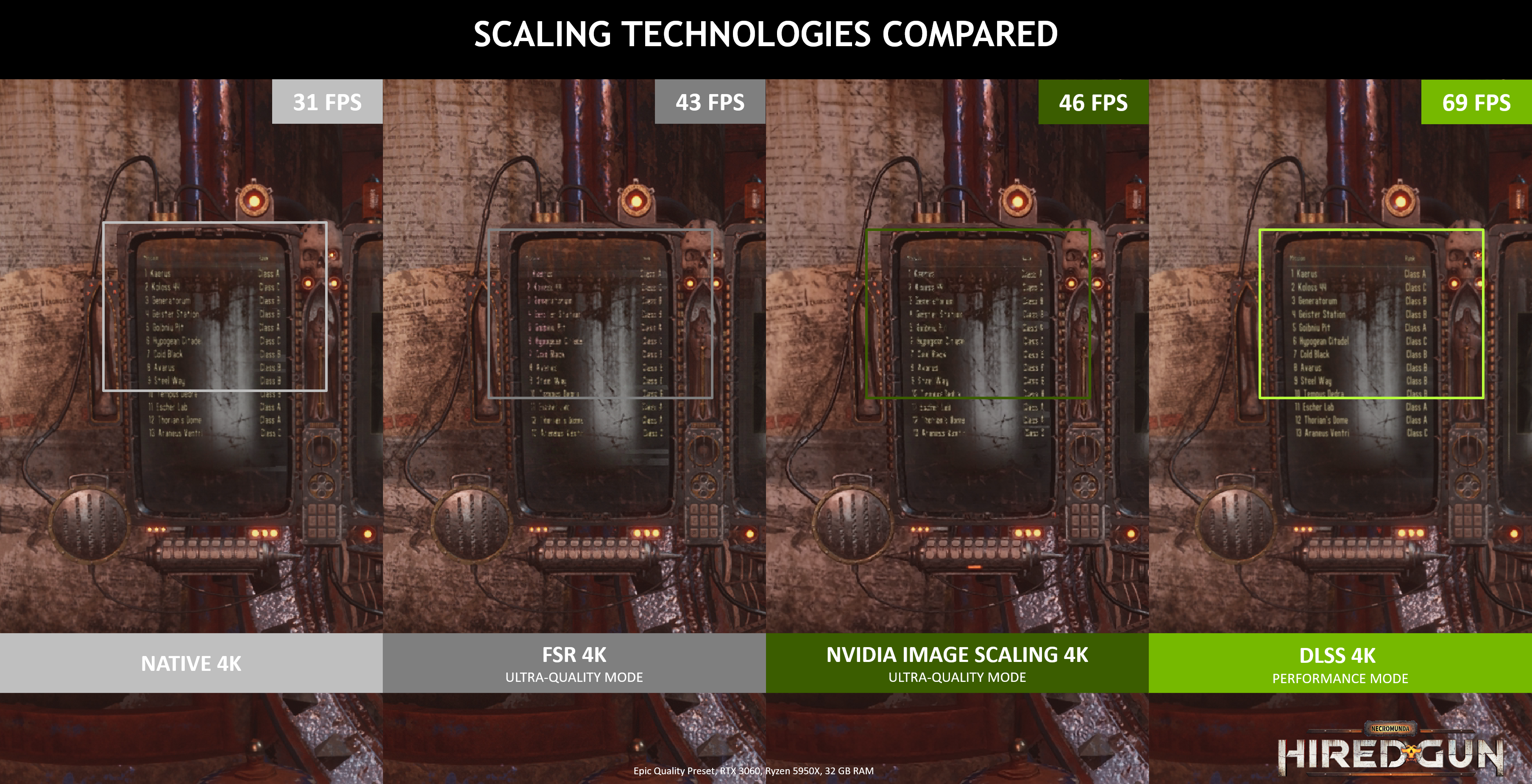Nvidia Image Scaling Runs On Radeon GPUs Thanks to Lossless Scaling
Integer scaling, FSR, and spatial scaling now exist in one app
Thanks to a new update to Lossless Scaling, Nvidia's Spatial Image Scaler can now be used on both Intel and AMD GPUs. This will allow gamers to play at lower resolutions to improve frame rates without sacrificing too much in the way of image quality.
Lossless Scaling is a third party application that allows anyone with any GPU to run image upscaling in their video games without the nasty side effect of blurring. Lossless Scaling uses integer scaling to accomplish this task.
However, Lossless Scaling has become much more than just an integer scaler; the application has recently introduced AMD FSR to its feature set, and is now adding Nvidia's image scaler as well. This means you can try multiple upscaling techniques directly from one application on a GPU.
Nvidia's image scaler has been around for a few years already, but it received a big update in the latest GeForce Game Ready driver. The scaler now features a 6-tap filter with four directional scaling and updated scaling and sharpening algorithms. This means the scaler can reduce the negative effects of image upscaling like staircase effects and artifacting even more so than it used to.
Nvidia also announced an SDK for its image scaler, allowing any developer to implement the image upscale in their game or app.
According to Nvidia's testing, its new updated image scaler is effectively on par with AMD's own FSR technology. In the test image below, you can see the loss in detail between FSR ultra quality mode, and the highest resolution of Nvidia's Image Scaler is effectively equal.
For a high-resolution image click here.
Get Tom's Hardware's best news and in-depth reviews, straight to your inbox.

Lossless Scaling is available right now on Steam with the Nvidia upscaler. You can try out the demo or pay for the full version for $4.99.

Aaron Klotz is a contributing writer for Tom’s Hardware, covering news related to computer hardware such as CPUs, and graphics cards.
-
VforV I really, really don't think nvidia did this from the "goodness" of their hearts.... ;)Reply
Thanks AMD for FSR, making it open for everyone. NIS is nvidia's response to that. Gamers win.
Now we need XeSS to join the party. -
pierrebai In the high-res image, the DLSS 4K scaling is cleaner than native 4K, which seems quite a bit suspicious?Reply -
hotaru.hino Reply
Sure it's good, but I don't see the point. NVIDIA has had an image sharpening feature in the driver set for years now. At some point (or maybe it was added at the same time), it also included a non-DLSS upscaler. If you have an AMD GPU, AMD has their own upscaler in the driver utilities.VforV said:I really, really don't think nvidia did this from the "goodness" of their hearts.... ;)
Thanks AMD for FSR, making it open for everyone. NIS is nvidia's response to that. Gamers win.
Now we need XeSS to join the party.
So I'm not even sure why this app exists unless there's some restriction on the driver based upscalers that I'm missing. Or why driver based upscalers aren't just using FSR or whatever by default.
DLSS in some cases can produce results that may look better than the native 4K resolution:pierrebai said:In the high-res image, the DLSS 4K scaling is cleaner than native 4K, which seems quite a bit suspicious?
gpzFX4P1Jow:683 -
rluker5 Reply
Only parts look cleaner. Some parts don't. With a good AI upscaler the parts that look better are the ones you notice.pierrebai said:In the high-res image, the DLSS 4K scaling is cleaner than native 4K, which seems quite a bit suspicious?
Hopefully Intel's is even better. -
d0x360 Replypierrebai said:In the high-res image, the DLSS 4K scaling is cleaner than native 4K, which seems quite a bit suspicious?
Its not that it's cleaner, it's more like the ai part is adding detail that wasn't there or making thin lines thicker. The satellite dish is a perfect example of this. The problem is sometimes it adds detail when it shouldn't. A great example is death stranding. Backpack stuff gets damaged but DLSS tends to remove the effect because it thinks the image is missing data.
Native 4k looks better. nVidia's DLSS sharpening pass has the effect of making the entire image brighter when you move the camera. Check out RDR2 for the best example of this because of the grass.
The problem with 4k is TAA blurs stuff too much and sharpening doesn't bring that detail back but TAA is the best we have until DLAA comes out. Hopefully that doesn't have the same sharpen pass as DLSS. -
escksu Replypierrebai said:In the high-res image, the DLSS 4K scaling is cleaner than native 4K, which seems quite a bit suspicious?
Nothing suspicious. ITs the way DLSS works. DLSS is not the same as image scaling like FSR. -
Alvar "Miles" Udell Hmm, pay $5 to play using lower image quality, or pay $0 and play using lower image quality settings...I think I'll pay $0 and play at a lower quality, especially if the example high resolution pic is typical of the results of really horrible quality.Reply -
Integr8d Replyd0x360 said:Its not that it's cleaner, it's more like the ai part is adding detail that wasn't there or making thin lines thicker. The satellite dish is a perfect example of this. The problem is sometimes it adds detail when it shouldn't. A great example is death stranding. Backpack stuff gets damaged but DLSS tends to remove the effect because it thinks the image is missing data.
Native 4k looks better. nVidia's DLSS sharpening pass has the effect of making the entire image brighter when you move the camera. Check out RDR2 for the best example of this because of the grass.
The problem with 4k is TAA blurs stuff too much and sharpening doesn't bring that detail back but TAA is the best we have until DLAA comes out. Hopefully that doesn't have the same sharpen pass as DLSS.
I think there's something up with this. The text in the native 4K is already kinda trash. But now I'm supposed to believe that DLSS took an even lower res version of that picture, which squished the text down to even more poo, and then AI magicky upscaled it to have even cleaner text than the native image??? -
Blacksad999 ReplyVforV said:I really, really don't think nvidia did this from the "goodness" of their hearts.... ;)
Thanks AMD for FSR, making it open for everyone. NIS is nvidia's response to that. Gamers win.
Now we need XeSS to join the party.
Nvidia has had this available in the Control Panel for years now. It just didn't have a "one button click" option.